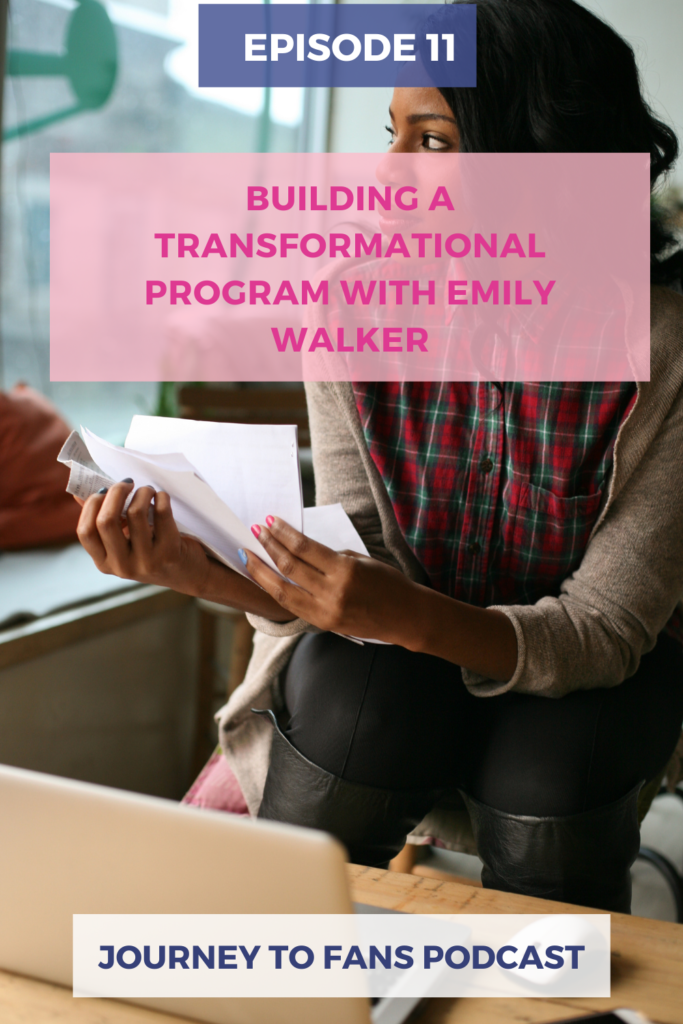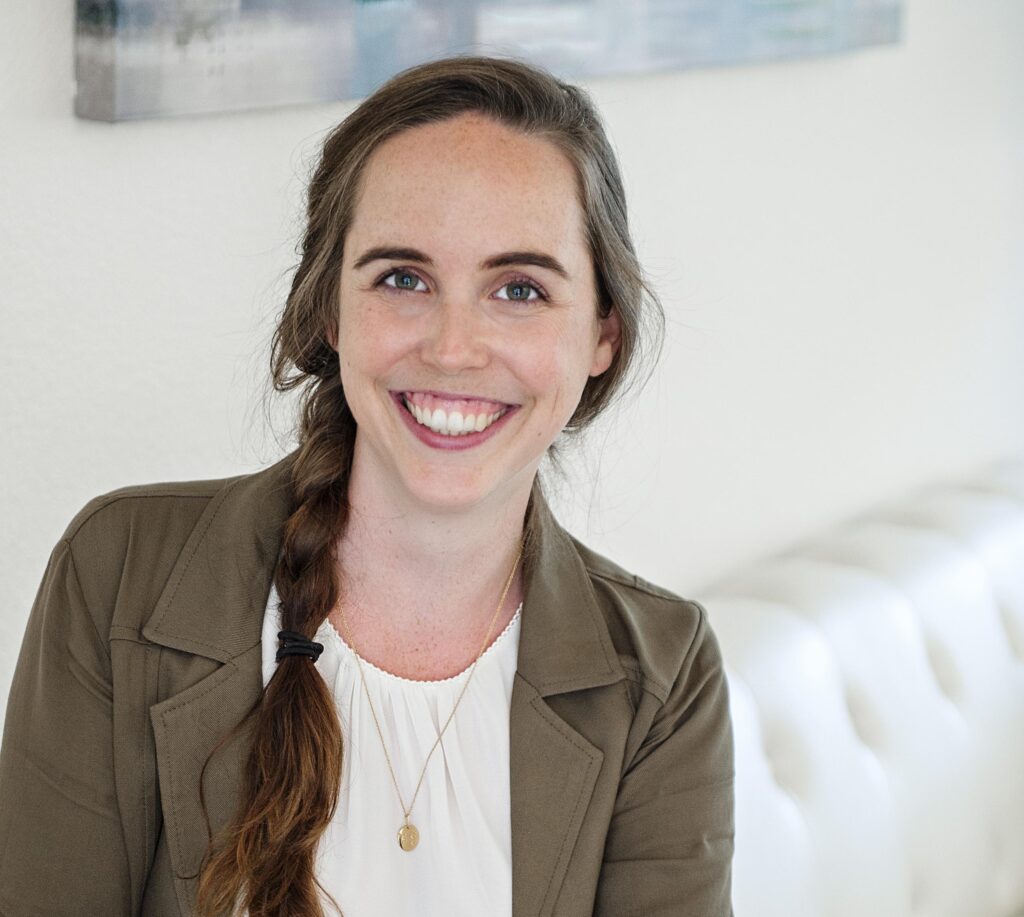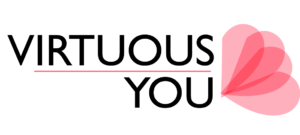When thinking about the transformation you offer,
you may be tempted to come up with a grandiose, life-changing, difference-making answer. After all, if your product isn’t producing a 180-degree life change, is it even worth creating?
Emily Walker, a course creation expert, shares all the different ways you can create a course or transformational program, knowing that the transformation can be as small as developing a new skill set or as big as a million-dollar mindset shift.
Read on to see what it means and looks like to create a transformational program.

What’s the core of a transformational program?
The core of a transformational program is an equal balance of what your students need and what you need out of the program. To create this balance, there should be sustainable transformation for your clients – where they’re not getting bombarded with information – while also ensuring that you’re creating a program that grows with you and fits your needs.
Journey mapping your program - the 3 main components
End of the journey
Starting at the end helps you determine how to build your program. The end journey is both the goal of the program and the goal for you. You have to ask yourself – how are your clients going to be feeling differently? What are they going to be doing differently? How are they going to be thinking differently? What has been transformed in their life?
Beginning of the journey
The next step is the beginning of the journey. Here, you are trying to get as clear about where your clients are right now and what are the gaps. What’s going on in their life, their business, their work, etc. What’s working well for them? What’s not working? What skills do they have? What do they have?
You also don’t have to make the beginning of the journey this horrible, dark place. Sometimes this happens with sales pages when talking about pain points. Sometimes, you are meeting people in their dark places. But sometimes you’re working with people where things are good, but want them to be so much better.
Blocks along the way
The last point is figuring out the blocks that happen along the way. What is going to stop my person from walking this journey? What blocks are they going to encounter along the way? Is it a mindset block? Is it an external block, like time, other priorities, energy, or finances? Internal blocks, like imposter syndrome or limiting beliefs?
You have to get firm on the blocks that are going to come up for your clients in order to know where to start your program, where to meet your people, where you’re going to end your program, the promise result, and what you need to address so that they can get that result as quickly and easily as possible.
2 things to remember when designing your transformational program
It’s a living creature
The first thing to remember is that your program is a living creature. It’s not a one and done entity. It’s an evolving product. Keeping this in mind will help remove the pressure that you’re going to map out the perfect program in the first round.
You need to gather feedback
You’re going to get feedback from your clients. Feedback is so important because it helps you create the best program that meets your clients needs. It’s okay if you don’t get every single piece of content in your brain in the course. You want to keep in mind that transformation comes from taking action.
It’s not your job to firehose them with as much content and information as possible. Your job is to get them to take action in a way that is easy and seamless as possible.

How to know your program is ready to sell
Proof of value
After working with your clients in a one-to-one capacity, you’ll have proof of the value of the transformation. The value is seen through the feedback provided by your clients and the results that they are achieving. So, now you’re moving into a more group scalable format.
Customers are asking for it
You may have your one on one or group program where they are asking for something that you haven’t created it. There’s validation that they want this product or program and you put it together for them.
Guaranteed outcomes
The proof is in the pudding. You and your clients can see the transformation. It affirms you that there’s no gaps in the course because you’ve taken the time to walk through the journey. You see the value of the program because you can guarantee if they follow your system, they will see the transformation.
Guaranteed outcomes can be contentious because you want to give your learners autonomy over their own journey. But what you can say is I’m confident I’ve done everything on my end. That you are going to get this result if you follow my system. Once you’re at that level, you can start selling.
Incorporating feedback through the program makes it easy to iterate
Having feedback incorporated into your program is so important. You can create different points in the program to encourage feedback.
Entry Point
Include an entry point feedback where the feedback is a pre-learning reflection. This is where you gather information on your clients big dreams for the program. What does success look like? If they coud have everything they wanted, what would that look like?

High Dream Low Dream
The high dream low dream exercise is where you ask participants what’s your highest dream for this program and what’s your lowest dream for this program? Asking these questions puts you ahead of people’s concerns.
For example, their highest dream might be wanting to be collaborative and gaining lots of support, but they fear they’re going to be spoken over, fall behind, or not know what anyone is saying. Asking these at the beginning provides you with expectations about what they want out of the program, but you also get ahead of their fears and concerns.
Midpoint Checkin
Having a midway check in is important because it helps you see if the program you designed is meeting expectations. It’s also a great place to ensure you’re getting feedback from people who are not completing the program. If you wait until the end of the program to get feedback, you’re missing feedback.
By asking, what’s working well, what could be working better, what has been the lightbulb moment for you, or what are you still confused about, you are setting yourself up to get testimonials. You can also use those opportunities for iteration.
Exit Point
Getting feedback at the completion of the program will give you insight about if the program met their expectations or if there’s room to improve. Asking questions like What stood out for you? What’s your big takeaway? What has shifted for you? How can I make this program even better? These questions can help you determine if the program is meeting the intended goals.
About Emily
I took everything I’d learned in the corporate instructional design world, applied it to the online entrepreneurship space, where very few people knew about effectively mapping out a transformational learner journey from start to finish, and made it feel like choreographing a dance in a tornado for people who have creative brains.
Now I get to design powerful + profitable online courses with clients all over the world.
I love each and every one of my clients so much – I even have their photos up on my wall.
My approach is so revolutionary for our industry that I’ve been featured in major publications like Thrive Global, coached for high-ticket masterminds for six and seven-figure business owners, and worked with best-selling authors like Amber Rae.

